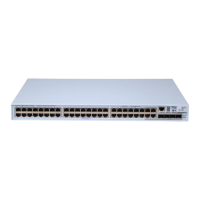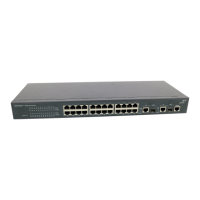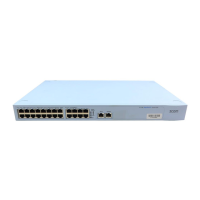1-13
To do… Use the command… Remarks
Enable system information
output to the trap buffer
info-center trapbuffer
[channel { channel-number |
channel-name } | size
buffersize]*
Optional
By default, the switch uses
information channel 3 to output
trap information to the trap
buffer, which can holds up to
256 items by default.
Configure the output rules of
system information
info-center source
{ modu-name | default }
channel { channel-number |
channel-name } [ { log | trap |
debug } { level severity | state
state } ]*
Optional
Refer to
Table 1-4 for the
default output rules of system
information.
Set the format of time stamp in
the output information
info-center timestamp { log |
trap | debugging } { boot |
date | none }
Optional
By default, the time stamp
format of the output trap
information is date.
Setting to Output System Information to the Log Buffer
Follow these steps to set to output system information to the log buffer:
To do… Use the command… Remarks
Enter system view
system-view
—
Enable the information center
info-center enable
Optional
Enabled by default.
Enable information output to
the log buffer
info-center logbuffer
[ channel { channel-number |
channel-name } | size
buffersize ]*
Optional
By default, the switch uses
information channel 4 to output
log information to the log buffer,
which can holds up to 512
items by default.
Configure the output rules of
system information
info-center source
{ modu-name | default }
channel { channel-number |
channel-name } [ { log | trap |
debug } { level severity | state
state } ]*
Optional
Refer to
Table 1-4 for the
default output rules of system
information.
Set the format of time stamp in
the output information
info-center timestamp { log |
trap | debugging } { boot |
date | none }
Optional
By default, the time stamp
format of the output log
information is date.
Setting to Output System Information to the SNMP NMS
Follow these steps to set to output system information to the SNMP NMS:
To do… Use the command… Remarks
Enter system view
system-view
—

